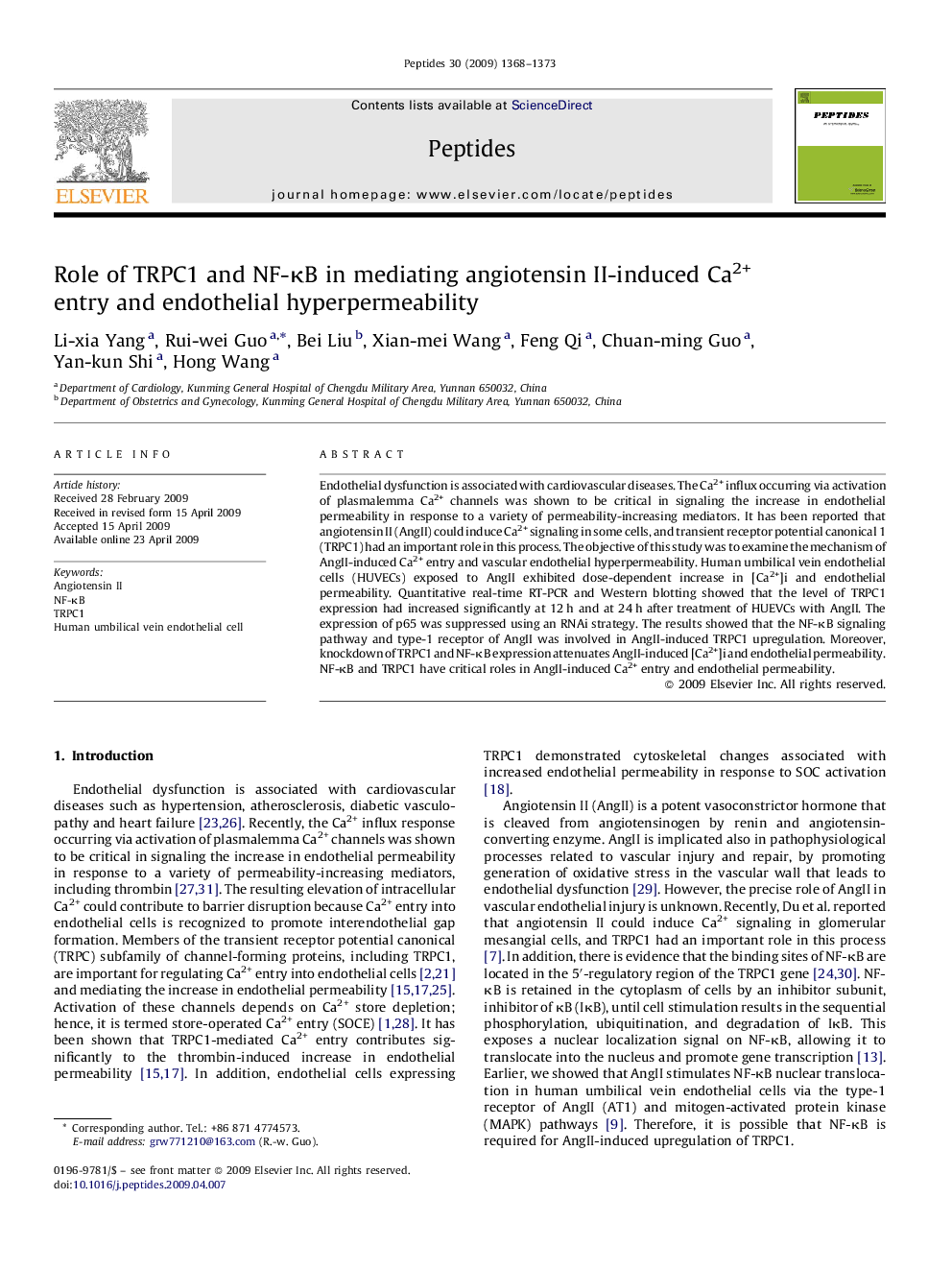| کد مقاله | کد نشریه | سال انتشار | مقاله انگلیسی | نسخه تمام متن |
|---|---|---|---|---|
| 2006734 | 1066351 | 2009 | 6 صفحه PDF | دانلود رایگان |

Endothelial dysfunction is associated with cardiovascular diseases. The Ca2+ influx occurring via activation of plasmalemma Ca2+ channels was shown to be critical in signaling the increase in endothelial permeability in response to a variety of permeability-increasing mediators. It has been reported that angiotensin II (AngII) could induce Ca2+ signaling in some cells, and transient receptor potential canonical 1 (TRPC1) had an important role in this process. The objective of this study was to examine the mechanism of AngII-induced Ca2+ entry and vascular endothelial hyperpermeability. Human umbilical vein endothelial cells (HUVECs) exposed to AngII exhibited dose-dependent increase in [Ca2+]i and endothelial permeability. Quantitative real-time RT-PCR and Western blotting showed that the level of TRPC1 expression had increased significantly at 12 h and at 24 h after treatment of HUEVCs with AngII. The expression of p65 was suppressed using an RNAi strategy. The results showed that the NF-κB signaling pathway and type-1 receptor of AngII was involved in AngII-induced TRPC1 upregulation. Moreover, knockdown of TRPC1 and NF-κB expression attenuates AngII-induced [Ca2+]i and endothelial permeability. NF-κB and TRPC1 have critical roles in AngII-induced Ca2+ entry and endothelial permeability.
Journal: Peptides - Volume 30, Issue 7, July 2009, Pages 1368–1373